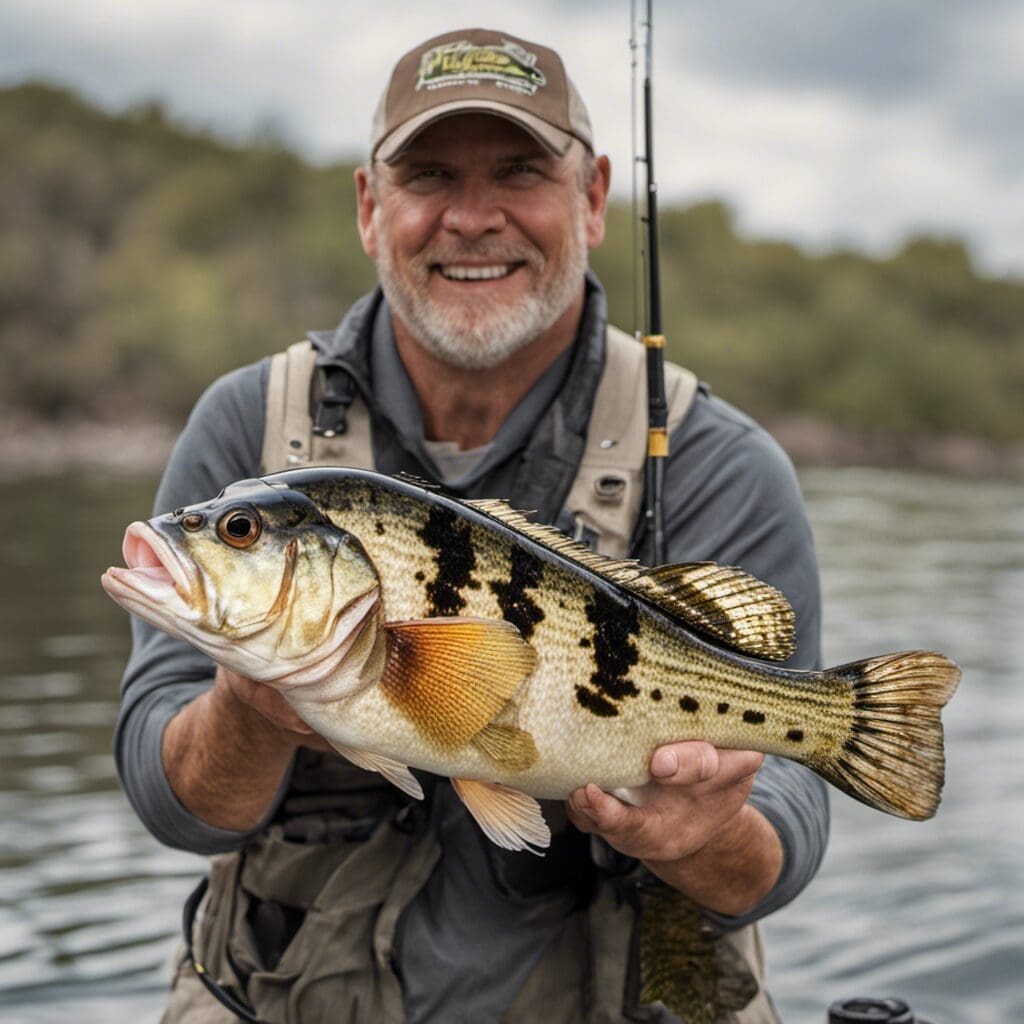Introduction
The Calico Bass, also known as the Kelp Bass, belongs to the family Serranidae. This gregarious fish species is beloved among recreational fishers in Southern California for its sporty fight and culinary qualities.
Conservation Status
Currently, the Calico Bass is listed as “Least Concern” on IUCN’s Red List of Threatened Species. This status means that there are enough of them to keep the population stable. California’s restrictive fishing regulations are believed to contribute significantly to maintaining the species’ population.
Conservation Efforts
The State of California has imposed size and bag limits to protect the Calico Bass. The daily bag limit is five fish per day, and all captured Calico Bass must be at least 14 inches long.
Statistics
| Average Length | Length Range | Average Weight | Weight Range | Average Lifespan |
|---|---|---|---|---|
| 17 inches | 12-28 inches | 2 lbs | 1-7.5 lbs | 34 years |
Distribution
The Calico Bass can be found along the Pacific coast, primarily between Baja California and Monterey Bay.
Migration Patterns
While this species is primarily a non-migratory, local movements associated with habitat and food availability have been observed.
Habitats
The Calico Bass prefers rocky areas and kelp beds in warm saltwater.
| Water Type | Depth Range | Temperature Range |
|---|---|---|
| Saltwater/brackish | 3-90 feet | 60-70 °F |
When and Where to See
An increase in Calico Bass sightings can be observed during the summer months, especially in the early morning or late afternoon.
Best Fishing Locations
If you are planning to fish for Calico Bass, some of the best spots include:
- Monterey Bay, California
- Catalina Island, California
- San Diego Bay, California
- Santa Barbara Island, California
General Tips
Look for rocky reefs or kelp beds where these fish tend to congregate. Also, consider fishing during tide changes, as this is when Calico Bass are most active.
How to Catch
Preferred Bait or Lures
Calico Bass will bite on live bait such as sardines, mackerel, squid, or anchovies. They also respond well to jigs, plugs, and other artificial lures.
Fishing Techniques
Fly fishing, trolling, and bottom fishing are effective techniques for catching Calico Bass.
Best Time of Day or Season for Fishing
The best times to fish for Calico Bass are early morning and late afternoon during the summer months.
Identification Guide
Calico Bass have robust bodies with a distinct lateral line running across their body. They are typically dark green or brown on top with a lighter belly and characteristic dark spots along their sides.
Culinary Information
How to Cook
Calico Bass can be prepared in numerous ways including grilling, baking, and frying. They have a delicate flavor that pairs well with citrus and savory seasonings.
Nutritional Information
Calico Bass is a lean source of protein and is rich in omega-3 fatty acids, making it a healthy choice for most diets.
Additional Information
Behavior
Calico Bass are territorial and tend to stake out a home range within kelp beds or rocky reefs. They feed on a variety of crustaceans and small fish.
Predators and Threats
Seals, sea lions, and larger predatory fish are natural predators of the Calico Bass. Overfishing is a human-induced threat, although conservation efforts have been successful in stabilizing the population.
References and Further Reading
- Fishbase - Calico Bass
- IUCN Red List – Calico Bass
- California Beaches – Calico Bass Fishing Tips
Please note that fishing restrictions may change, so always check local regulations.

